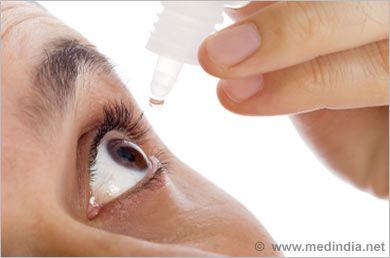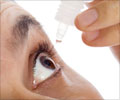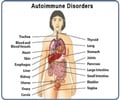About
Sjögren's syndrome is an autoimmune disease that affects the exocrine glands and other tissues of the body. Most of the patients are females.
Sjögren's syndrome is an autoimmune disease characterized by inflammation of certain glands and other tissues of the body. It is named after a Swedish ophthalmologist, Henrik Sjögren. The majority of the patients (90%) are females.

Autoimmune diseases occur when the body produces antibodies against itself, leading to inflammation of tissues. In those with Sjögren's syndrome, the lachrymal or tear glands that produce tears, and the salivary glands including the parotid gland that produce saliva in the mouth become inflamed leading to excessive mouth and eye dryness.
Primary Sjogren's syndrome refers to the condition with gland inflammation that is not linked to another connective tissue disease. Secondary Sjögren’s syndrome refers to the condition associated with a connective tissue disease (such as lupus erythematosus, rheumatoid arthritis or scleroderma).
The exact causes of Sjögren's syndrome are largely unknown although research is in favor of genetic factors. It is common to identify the disease in other members of the family of the affected person. This condition is also seen to occur in the relatives of those with other autoimmune conditions such as thyroid disease, lupus or type I diabetes.
Signs and Symptoms
Symptoms of Sjögren's syndrome mostly involve the glands, but other organs may be involved too.
Common symptoms include-
- Eye irritation /dryness (xerophthalmia)
- Mouth dryness (xerostomia)
- Dental decays /cavities
- Difficulty in swallowing
- Mouth sores
- Gum disease
- Infection inside cheek (when parotid gland is involved)
- Inflammation of respiratory tract and the vagina (occurs sometimes)
Sometimes extraglandular impairment takes place and in those cases, the following symptoms occur-
- Fatigue
- Joint pain (arthritis)
- Lymph node enlargement
- Diseases of the muscle, nerve and kidneys
- Inflammation of the lungs
Some of the diseases that are known to be associated with Sjögren's syndrome are-
- Vasculitis - which is a condition involving the inflammation of blood vessels. It is a rare but serious complication of Sjögren's syndrome
- Thyroiditis - Inflammation and malfunction of the thyroid
- Gastroesophageal reflux disease (GERD) - A GI tract condition that is characterized by heart burn
- Primary biliary cirrhosis - Characterized by scarring of liver tissue
- Cancer of the lymph gland
Diagnosis
Diagnosis of Sjögren's syndrome begins by observing the clinical features of the condition such as dryness of the eye and the mouth. An eye specialist (ophthalmologist) would be able to detect the causes of eye dryness, while the salivary gland inflammation may be detected by nuclear studies supported by a biopsy of the salivary gland tissue.
Sjögren's syndrome patients produce auto antibodies which can be detected through blood tests.
Treatment
There is no cure for Sjögren’s syndrome; the treatment usually focuses on alleviating the symptoms and preventing complications, such as infections that may occur in the eyes, mouth and the breathing passages. Some of the treatments for Sjögren's syndrome are listed below -
- Dryness of the eyes- Using artificial tears, eye-lubricant ointments at night, flax seed oil in the diet and minimizing the use of hair dryers can help to control eye dryness.
- Cyclosporin eye drops can be used to reduce eye inflammation
- Dryness of mouth can be alleviated by humidifying air and also by drinking fluids. Constant monitoring for dental decay must be carried out.
- The salivary glands can be stimulated by sucking on glycerin swabs or sugarless lemon drops
- Saliva-stimulating medications such as pilocarpine and cevimeline can be used for treating mouth dryness. Consult a doctor before using these drugs.
- Artificial saliva preparations, Numoisyn Liquid, lozenges, vitamin E oil, available over-the-counter, can also help to ease dryness of mouth
- Infections of the mouth and teeth must be detected as early as possible through prompt dental care to prevent complications.
- Nasal sprays and vaginal lubricants can help to control dryness in the nasal passages and vagina, respectively.
- Hydroxychloroquine, cortisone, azathioprine or cyclophosphamide are some of the other drugs used to treat Sjogren’s syndrome.
- Infections can be controlled with the correct antibiotics, while cancer, another complication of Sjögren’s syndrome, should be addressed separately.
Prevention
Sjögren's syndrome is a disease in which genes are involved and hence it cannot be prevented. If proper care is taken, complications may be avoided.
Being the focus of active research, new methods of treatment for Sjögren's syndrome may be available in the near future.






